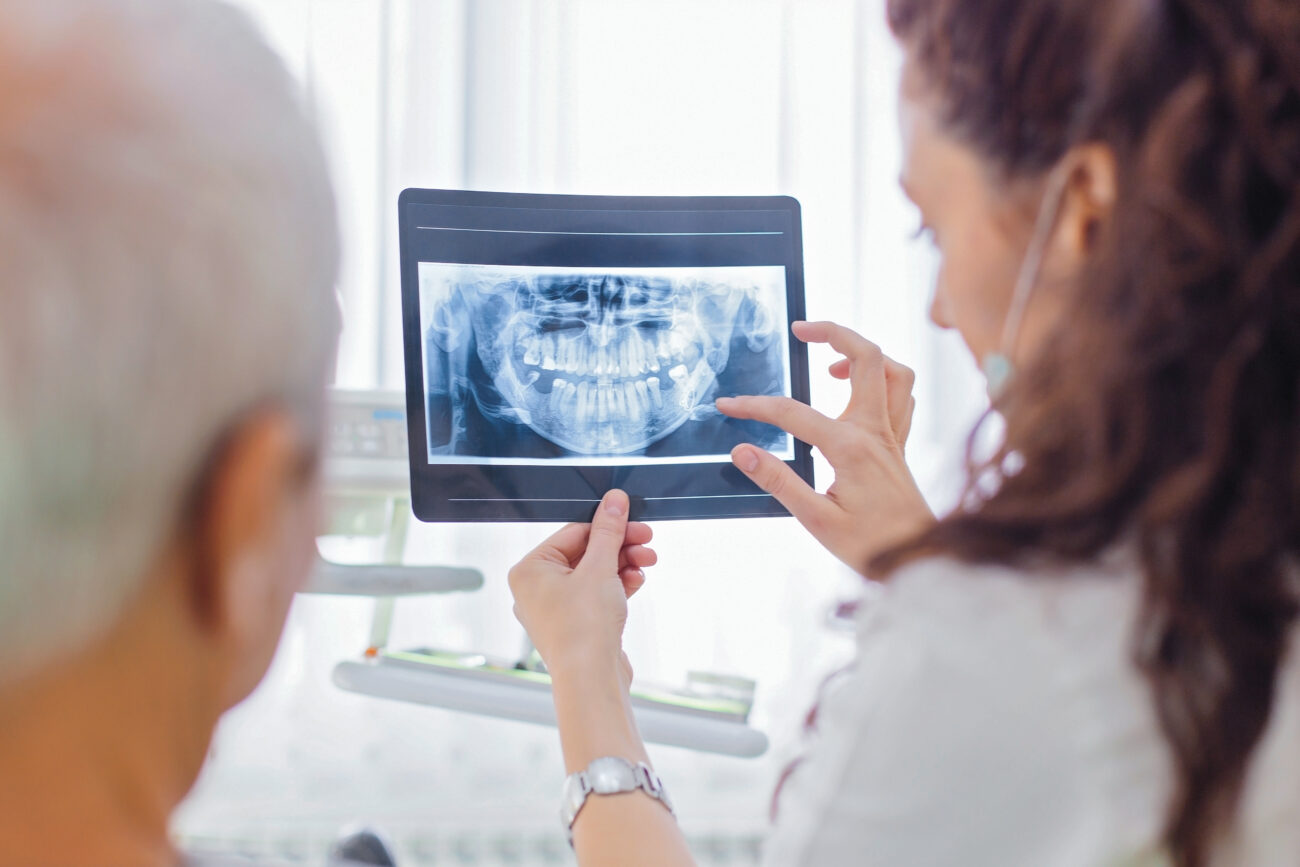Before dental implant treatment, we need to ensure patients are good candidates for treatment. Patients cannot smoke or use tobacco products during the implant treatment process because nicotine constricts the blood vessels and inhibits healing. Dental patients also need enough healthy jaw bones to support dental implants and implant restorations. Bone grafting is an option for patients in our Lancaster and Palmdale, CA offices if they do not have enough healthy jaw bones and require stability.
Sinus augmentation and bone grafting treatments create stable, lasting restorations. The treatments themselves are safe and create effective results.

Bone Grafting in Lancaster and Palmdale, CA
A bone grafting procedure can help patients who have lost bone due to bone resorption. Bone resorption occurs after tooth loss or a tooth extraction when there is no longer a tooth root. As a result, patients can lose facial structure and experience facial sagging. Bone loss can also make it difficult to receive lasting dental restorations.
This is where bone grafting treatments come into play. Bone grafting prevents further damage to remaining teeth adjacent to a missing tooth or teeth. This treatment also ensures patients have enough bone tissue to support dental implants and implant restorations.
We add bone material to the tooth socket during a bone grafting procedure. Then, we place a membrane over the socket. Over time, the body regenerates the bone. We will examine the treated area one to two weeks later and remove sutures as needed. Then, after 3 to 6 months, the bone graft is fully integrated with the jaw bone, and you will be prepared for implant treatment.
Download our brochure to learn more about bone grafting and socket preservation:
Also known as sinus augmentation, sinus lift surgery ensures that patients have enough healthy bone in the upper back jaw. Because this space is close to the sinuses, we can essentially “lift” or raise the sinus floor for new bone to form.
During this surgery, we lift the bone into the sinus cavity and fill the space beneath with bone grafting material made from calcium and ceramic. Without a sinus lift, an implant can impact the sinuses. Sinus augmentation adds more structure to protect the sinuses and ensure healthy implants.
Bone Grafting FAQs
How painful is a bone graft?
A bone graft is usually not painful. Most patients who undergo this procedure report little to no pain. Moreover, your oral surgeon will perform the procedure while you are under local anesthesia. After the procedure, however, you could experience swelling, bruising, or mild discomfort once the anesthesia wears off. Any pain or discomfort you experience will likely be mild to moderate. Furthermore, you can manage with over-the-counter pain medication. Overall, many patients report that their pain subsides within a week or two after surgery.
How do you sleep after a bone graft?
After a bone graft, you should sleep with your head elevated for the first few nights. This will help reduce swelling around the graft area. You can use some pillows to prop yourself up or consider sleeping in a reclining chair. You should also avoid sleeping on the side where the oral surgeon placed the graft. This will prevent putting pressure on the surgical site.
Can you get a dry socket with a bone graft?
Yes. It is possible to get a dry socket after a bone graft procedure. However, you are less likely to have a dry socket after a bone graft than a regular extraction. This is because the oral surgeon will cover the graft to ensure the bone has time to grow with and into the jaw.
Are bone grafts always necessary for dental implants?
No. Not all dental implants require bone grafting. It depends on your case. If you have good jawbone density to support a dental implant, you can bypass this step. Bone grafts come into play when you do not have enough bone to strengthen the tooth implant. Creating a strong foundation for your new is always important. Your dentist or oral surgeon will assess your jawbone to decide if a bone graft is necessary.
Is dental bone graft risky?
Dentists and oral surgeons generally consider dental bone grafting a safe procedure. However, there are potential risks and complications. Possible complications include excessive bleeding, pain, swelling, and infection of the graft site. However, these risks are rare. You have the best chance of not experiencing complications by following your dentist’s instructions for post-operative care.
How long does dental bone graft swelling last?
Swelling after a dental bone graft usually peaks around 48 to 72 hours post-surgery. After that, it should gradually start to subside. Most patients notice a significant reduction in swelling within a week.
Call Our Palmdale and Lancaster Dental Offices
If you are interested in dental implants but are unsure if you have enough jaw bone left to support a restoration, please call our dental offices. Call our Lancaster office at (661) 948-6700 or schedule a dental visit to our Lancaster dentist office online. You can call our Palmdale office at (661) 273-6565 or schedule a visit to our Palmdale dentist office online.
We will work with you throughout the treatment to ensure you feel comfortable and happy with your dental restoration.

